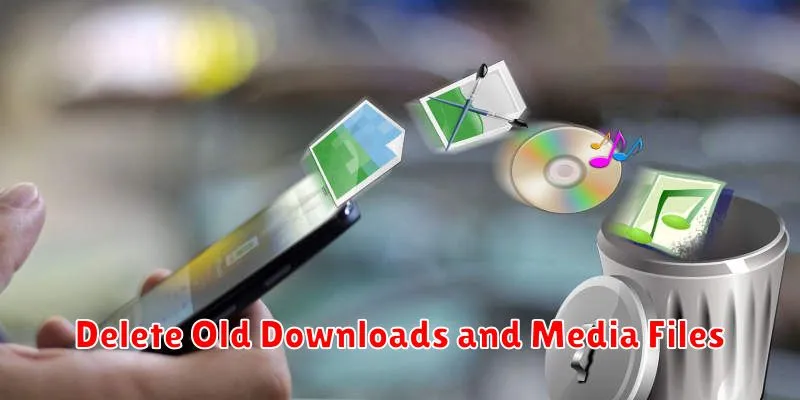Is your phone constantly reminding you about low internal storage? Are you tired of deleting precious photos and videos or uninstalling beloved apps just to make space for more? Reclaiming valuable storage space on your phone can be a frustrating endeavor, but it doesn’t have to be. This article provides clever tips and actionable strategies to help you free up internal storage on your phone and take back control of your digital life. Learn how to effectively manage your files, apps, and data to maximize your phone’s storage capacity and avoid those dreaded low storage warnings.
Discover effective methods for identifying storage-hogging culprits and learn how to efficiently remove them. From clearing cached data and managing downloads to utilizing cloud storage solutions and identifying duplicate files, we’ll explore a range of practical techniques to help you reclaim your space. Whether you’re using an Android device or an iPhone, these clever tips will empower you to optimize your internal storage and enjoy a smoother, more efficient mobile experience. Stop letting low storage dictate what you can keep and start enjoying the freedom of ample space on your phone.
Identify Storage Hogs
Before you start deleting things randomly, it’s crucial to pinpoint what’s actually taking up all that precious space. Most modern smartphones offer built-in storage analysis tools. These tools provide a visual breakdown of your storage consumption, categorized by app, media type (photos, videos, audio), and other data.
Accessing this feature varies slightly depending on your phone’s operating system, but it’s typically found within the Settings menu, often under a section named “Storage” or similar. Once located, this tool will give you a clear picture of which apps or file types are the biggest culprits.
Pay close attention to apps that seem disproportionately large compared to their function. Gaming apps, streaming services, and social media platforms are often among the top offenders. Knowing your storage hogs is the first step toward efficient space reclamation.
Clear App Cache and Data
Over time, apps accumulate cached data and temporary files that can consume significant storage space. Clearing this data can often free up a substantial amount of storage without affecting app functionality. Cached data consists of temporary files stored by apps to speed up loading times and improve performance. While helpful, this data can bloat over time.
Most phones offer a way to clear cached data for individual apps or all apps at once. Typically, you can find this option within the “Storage” or “Apps” section of your phone’s settings. Clearing data, on the other hand, is a more drastic measure. It removes all app settings, preferences, and saved information. This is useful if an app is malfunctioning, but be aware that you’ll need to reconfigure the app as if it were newly installed.
Be mindful when clearing app data, especially for essential apps. Consider clearing the cache first to see if that sufficiently addresses your storage concerns.
Uninstall Unused Apps
One of the most effective ways to free up significant storage space on your phone is to uninstall applications you no longer use. Over time, apps accumulate, and even if not actively used, they still occupy precious space. Identifying and removing these unused apps can make a noticeable difference.
Begin by reviewing your app list. Look for apps you haven’t used in the past month or two. Be honest with yourself; if you haven’t opened it recently, chances are you won’t miss it. Uninstalling these apps not only reclaims storage but can also improve your phone’s performance by reducing background processes.
Most phone operating systems provide a simple way to uninstall apps. Typically, you can long-press the app icon and select the uninstall option. Alternatively, you can manage apps through your phone’s settings menu.
Embrace Cloud Storage: A Game Changer

Cloud storage offers a powerful solution for expanding your phone’s storage capacity without physically increasing it. By utilizing services like Google Drive, iCloud, or Dropbox, you can seamlessly transfer large files, such as photos, videos, and documents, to a secure online space.
This frees up valuable internal storage on your device, allowing it to run more efficiently. Many cloud services offer automatic backup features, ensuring your data is safely stored and readily accessible from any device with an internet connection. Consider the storage options available and select a plan that suits your needs and budget.
Migrating files to the cloud not only expands your phone’s storage but also contributes to better data management. With files organized and accessible in the cloud, locating specific documents becomes significantly easier.
Delete Old Downloads and Media Files

Downloaded files and media, such as images, videos, and audio files, can quickly accumulate and consume a significant portion of your phone’s internal storage. Regularly reviewing and deleting these files is crucial for maintaining adequate storage space.
Begin by checking your downloads folder. Delete any files that are no longer needed, such as outdated installation packages, old documents, or expired tickets. Next, navigate to your media folders. Identify large video files or duplicate photos that can be safely removed. Consider transferring important media to a computer or external storage device for long-term safekeeping.
Review your messaging apps as they often store a substantial amount of received media files. Delete unnecessary GIFs, memes, or videos that have been shared within chats.
Manage Offline Content
Offline content, while convenient, can consume significant storage space. Regularly reviewing and deleting downloaded files can free up considerable space. This includes items like offline maps, podcasts, videos, and music.
Streaming services often allow downloading content for offline enjoyment. Review downloaded content within each app and remove items you no longer need. Be mindful of your listening and viewing habits. If you rarely utilize offline content, consider streaming instead to save valuable space.
Offline reading materials such as ebooks and magazines can also accumulate. Delete items you’ve already read or consider switching to online reading platforms. This will significantly reduce the strain on your device’s internal storage.
Transfer Files to Your Computer
Offloading files to your computer is a reliable way to free up significant storage space on your phone. This is particularly useful for large files like videos and photos which often consume a substantial portion of internal storage.
There are several methods to accomplish this. You can connect your phone directly to your computer with a USB cable. Most operating systems recognize the phone as an external drive, allowing you to drag and drop files.
Alternatively, cloud storage services can be utilized as intermediaries. Upload the files to your preferred cloud service from your phone, then download them to your computer. Once safely backed up on your computer, delete the files from your phone.
Use a Storage Analyzer App
Storage analyzer apps provide a visual representation of your phone’s storage distribution, making it easy to pinpoint storage hogs. These apps scan your internal storage and categorize files by type (photos, videos, apps, etc.) and size. This allows you to quickly identify large files or folders that you might have forgotten about.
Many storage analyzers also offer features beyond just visualizing data. Some can recommend files for deletion, such as duplicate photos or large videos. Others can help you locate cached data from apps that are consuming unnecessary space. By using a storage analyzer app, you gain a clearer understanding of your phone’s storage usage and can make informed decisions about what to keep and what to remove.
Consider a MicroSD Card (if supported)
If your phone supports expandable storage via a microSD card, this can be a cost-effective way to significantly increase your storage capacity. Not all phones offer this feature, so check your phone’s specifications.
MicroSD cards can store a plethora of data, including photos, videos, music, and even some apps. Transferring these files to your microSD card can free up valuable internal storage space on your device. Be mindful of the class rating of the microSD card, as this indicates the speed of data transfer. A higher class rating translates to faster performance.
Before purchasing a microSD card, verify the maximum capacity supported by your phone. Inserting a card with a larger capacity than your phone supports may lead to compatibility issues.

